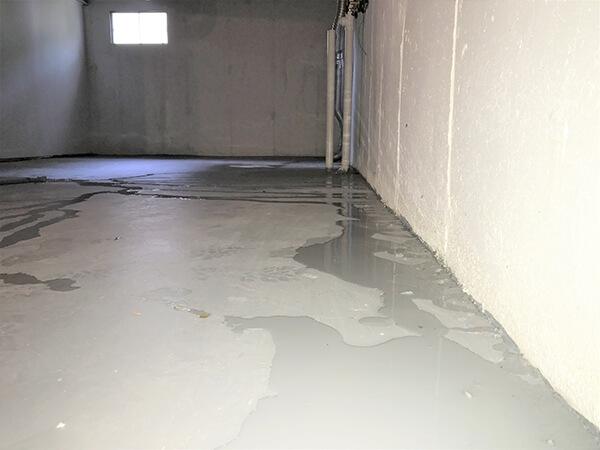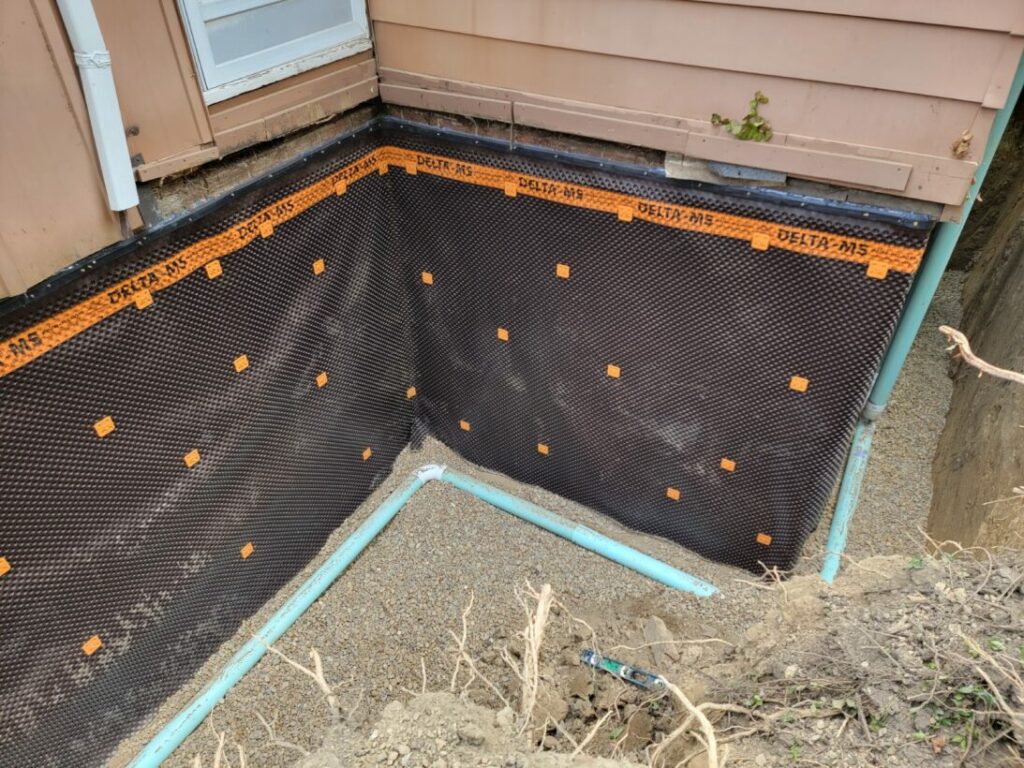Checking Out the Different Methods of Cellar Waterproofing and Their Benefits
Cellar waterproofing is essential for maintaining a dry and secure environment. Different techniques exist, each with unique benefits. Inside sealants safeguard versus wetness intrusion, while outside systems address water drainage problems. Sump pumps and French drains take care of water efficiently, and dehumidifiers control moisture levels. Recognizing these choices can assist property owners make educated decisions. The appropriate option frequently depends on details conditions and demands. What aspects should one consider when choosing the very best strategy?
Interior Sealants: An Effective Obstacle Against Dampness
Inside sealers offer as a necessary line of defense against moisture invasion in cellars. These items are designed to create a waterproof barrier on floors and walls, efficiently preventing water from seeping in. Readily available in numerous kinds, including paints, finishings, and sealants, they can load splits and pores in concrete, making sure a much more safe environment.The application process generally involves cleaning up the surfaces to remove dust and debris, followed by the mindful application of the sealant. Once treated, these products improve the longevity of the basement while lowering humidity degrees, which can result in mold and mildew growth and architectural damage.Moreover, interior sealers are frequently very easy to use and can be a cost-efficient remedy for house owners wanting to minimize wetness concerns. By offering a dependable layer of defense, they play an essential function in protecting the cellar space, maintaining both its integrity and usability.
Outside Waterproofing Systems: Shielding Your Foundation
Outside waterproofing systems supply a robust solution when property owners seek to safeguard their foundations from water damage. These systems usually entail using water-proof membrane layers and water drainage systems to the outside wall surfaces of a cellar. By developing an obstacle against groundwater, they properly prevent dampness from permeating the foundation (Exterior Drainage Solutions).One significant advantage of outside waterproofing is its capacity to address the resource of water invasion before it reaches the inside. This aggressive technique not just safeguards structural integrity but additionally enhances the long life of the home.Moreover, exterior systems can improve the general drain around the foundation, reducing hydrostatic pressure. This minimizes the opportunity of fractures and heaving that can result from water accumulation. Consequently, homeowners can delight in a completely dry, steady basement setting, substantially improving residential or commercial property value and comfort. Eventually, outside waterproofing systems are a critical investment in preserving a healthy home foundation
Sump Pumps: Taking Care Of Water Build-up Successfully
Sump pumps play an essential function in managing water build-up in cellars, providing an effective option for homes vulnerable to flooding or excess moisture. These devices are installed in sump pits, normally situated at the most affordable factor of a cellar, where they accumulate water that permeates in from the surrounding soil. When the water level climbs, the sump pump triggers, successfully pumping out the excess water to a marked water drainage area, thereby preventing prospective damages to the structure and interior spaces.There are 2 main kinds of sump pumps: completely submersible and stand. Submersible pumps are set up underwater, making them less visible and typically quieter, while pedestal pumps are situated above the sump pit and are less complicated to keep. By properly taking care of water buildup, sump pumps not just secure against structural damages yet likewise contribute to a healthier living environment by lowering moisture levels and stopping mold and mildew development.
French Drainpipes: Rerouting Water Far From Your Home

Dehumidifiers: Reducing Humidity Degrees for a Drier Setting
Cellar waterproofing includes various approaches, and dehumidifiers play a find out this here substantial function in preserving a dry setting. By successfully lowering humidity levels, dehumidifiers aid prevent wetness accumulation, which can bring about mold and mildew growth, structural damages, and unpleasant odors. These tools function by drawing out excess dampness from the air, producing a healthier and more comfy space.In enhancement to improving air top quality, dehumidifiers can enhance the performance of various other waterproofing techniques, such as sealing and water drainage systems. They aid maintain excellent humidity levels, generally between 30% and 50%, which is essential for protecting against condensation on walls and floors.Moreover, modern dehumidifiers are energy-efficient and included functions like programmable settings and automatic shut-off, making them user-friendly. Generally, including a dehumidifier right into cellar waterproofing intends gives an important layer of security against moisture-related problems, consequently securing the home's integrity.
Frequently Asked Questions

Just How Long Do Waterproofing Solutions Commonly Last?
Waterproofing solutions normally last in between 5 to two decades, depending on the technique utilized, top quality of materials, and environmental problems. Normal maintenance and assessments can aid extend their efficiency and total lifespan.
Can I Waterproof My Basement Myself?
The specific considered whether to water resistant the cellar separately. They uncovered that while do it yourself options exist, understanding of strategies and products is necessary to ensure effectiveness, and professional assistance might supply better long-lasting outcomes.
What Are the Indicators of Basement Moisture Issues?
Indications of cellar wetness concerns consist of visible water stains on walls, mildewy smells, peeling paint, mold development, and dampness on floors. High humidity levels may also indicate underlying moisture problems needing interest to prevent additional damages.
Just How Much Does Cellar Waterproofing Price?
The price of cellar waterproofing differs commonly, commonly ranging from $1,500 to $5,000. Variables affecting expenditures consist of the intensity of moisture issues, the picked approach, and the geographical place of the webpage residential or commercial property.
Will Waterproofing Increase My Home's Worth?
The inquiry of whether waterproofing raises a home's worth often arises amongst home owners. Generally, reliable waterproofing can boost residential property appeal, mitigate damages risks, and possibly cause higher resale prices, relying on the regional realty market. By producing a barrier versus groundwater, they successfully avoid wetness from penetrating the foundation.One noteworthy benefit of exterior waterproofing is its capability to resolve the resource of water intrusion before it reaches the inside. Sump pumps play a crucial role in taking care of water build-up in cellars, offering an effective remedy for homes prone to flooding or excess dampness. When the water level rises, the sump pump turns on, efficiently pumping out the excess water to a marked water drainage area, thus stopping prospective damages to the structure and indoor spaces.There are 2 main types of sump pumps: submersible and pedestal. Sump Pump Installation And Replacement. By directing groundwater and surface water away from the foundation, French drains assistance stop water build-up in basements and crawl areas, lowering the threat of structural damage and mold growth.Installation usually takes place around the border of the home, ensuring that water is efficiently diverted. Signs of basement moisture issues include visible water discolorations on wall surfaces, moldy odors, peeling off paint, mold and mildew development, and moisture on floors